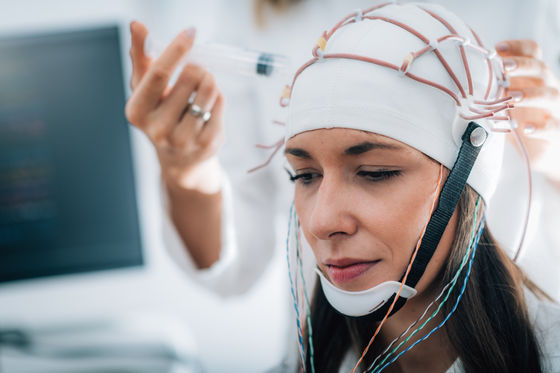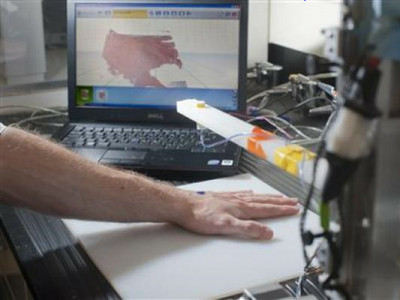A new technology has been developed that can easily measure brainwaves by printing 'e-tattoos' on the scalp that can be washed off with shampoo

A new technology for measuring brainwaves has been announced, which uses an 'electronic tattoo' that is made of conductive material applied to the scalp to measure brainwaves, and can be washed off with shampoo after the test is over.
On-scalp printing of personalized electroencephalography e-tattoos: Cell Biomaterials
'Electronic' scalp tattoos could be next big thing in brain monitoring | Live Science
https://www.livescience.com/health/neuroscience/electronic-scalp-tattoos-could-be-next-big-thing-in-brain-monitoring
A typical electroencephalogram (EEG) test involves a specialist making marks on a patient's head and attaching electrodes with long cables or placing a cap with electrodes on the head. But the gel-covered electrodes and long cables restrict the subject's movement, making this method inconvenient and time-consuming, says Nanshu Lu, a professor of engineering at the University of Texas at Austin.

Meanwhile, the new technology that Lu and his colleagues published in the academic journal Cell Biomaterials uses a robotic arm to apply ink made of a conductive material to the scalp, which can be prepared in a relatively short time. So far, the robotic arm is operated manually, which takes about an hour, but in the future, it is expected that printing can be completed in 20 minutes if it is automated.
You can see the robot arm actually printing the 'EEG electronic tattoo' on the scalp from the
3D Printable EEG Electrode E-Tattoo - YouTube
The main component of the ink is the conductive material PEDOT:PSS/poly(3,4-ethylenedioxythiophene):poly(4-styrenesulfonate) , which dries to form a thin film 30 micrometers thick.
The thin film is only about half the thickness of a human hair, but when tested on five subjects with short hair, it was found to measure brain waves just as well as conventional EEG electrodes.
Moreover, while EEG electrodes are prone to peeling off and fall off after about six hours, the new electronic tattoo was able to record brain activity throughout the day. And unlike the adhesive used for EEG electrodes, which sticks tightly to hair, the electronic tattoo could be easily removed by rubbing it off with an alcohol swab or washing it off with shampoo after use.

In the future, Lu and his team would like to determine whether the electronic tattoo is actually effective for patients with neurological disorders, and the effects of hair length, hair type, skin allergies, etc. They also plan to develop a printer that can apply ink that will not stick to the subject's pillow when they sleep, making it easier to use for measuring brain activity during sleep.
'This innovation will write a new chapter in the history of neurotechnology by solving many long-standing challenges and significantly expanding the potential applications of EEG electronic tattoos, allowing for greater customization and precision while improving patient well-being and healthcare labor,' the research team wrote in their paper.
Related Posts:







